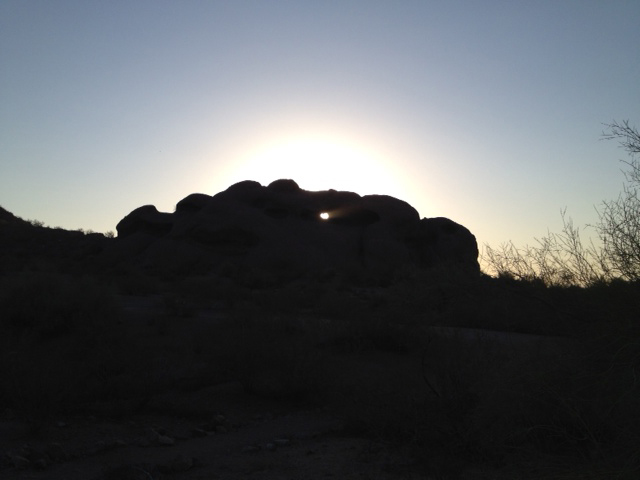This time of year, with nighttime temperatures in excess of 100 degrees in Phoenix, we spend much of our time hiding from the summer sun.
The sun is our most abundant life-giving resource and it has been celebrated as such by human civilizations in this region for more than 10,000 years.
Thursday, June 21, 2012 marks the summer solstice and there are a number of locations in and around Arizona, including the following four, where the solstice is marked in compelling human-built environments.
1) A solar calendar was discovered in 2008 at Salmon Ruin, near Farmington, NM and Chaco Canyon, site of the sun dagger solar and lunar marker. On Thursday morning at 7:00 a.m., the director of the Salmon Ruin will demonstrate the solstice marker.
Salmon Ruins, near Farmington, NM
2) The Burton Barr Central Library designed by Will Bruder marks the solstice with a light display that occurs only one time per year at high noon on the summer solstice, the longest day of the year. This year’s celebration from 11:30 a.m. to 1:30 p.m. will also include musical performances by Canyon Records artists Aaron White and Anthony Wakeman.
Burton Barr Central Library, Phoenix
3) Bruder studied with Paolo Soleri who in turn studied briefly with Frank Lloyd Wright. Soleri believes a deeper connection with the natural world is essential to more sustainable living. The only bridge built by the Italian-born Soleri is in Scottsdale. On the summer solstice, the piers align perfectly with the direction of the sun such that no shadow is cast.
Soleri Bridge and Plaza, Scottsdale
4) Completed in 1992 and designed by Steve Martino and Jody Pinto, the City Boundary Project on the northern edge of Papago Park includes a series of stone monuments that align at sunrise on the summer solstice.
City Boundary Project in Papago Park
By observing one of these solstice events, you join in a centuries-old tradition observed in this desert region. Each of these events and sites are free and open to the public. Please visit the links for more detailed information.

